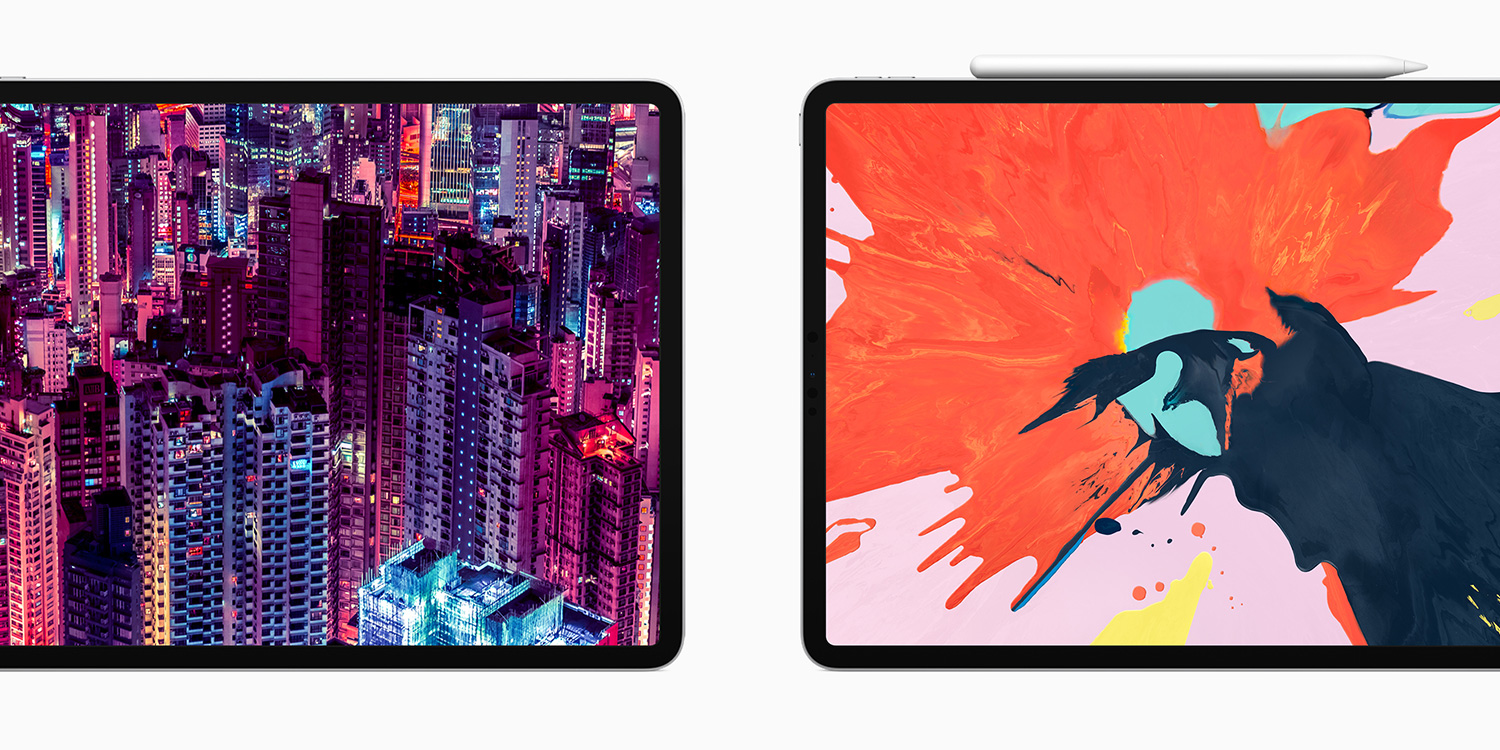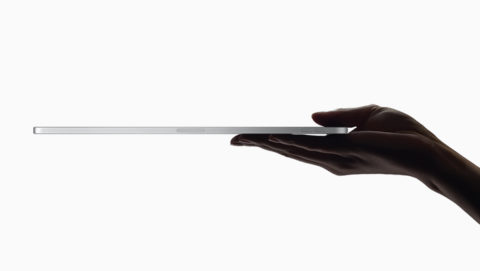So the iPad Pro has had its first major redesign since it was added to the iPad family back in 2015. It’s taken some design cues from the iPhone X range, ditching the Home button to allow more usable space for the display. Add to that a sizable performance upgrade under the hood and some new accessories and you’ve got quite a compelling product.
The new iPad Pro is already available for order, and will start shipping from November 7 2018. Let’s take a closer look at some of the key aspects of the new iPad Pro.
How big is it?
There are still two distinct sizes of iPad Pro to choose from. Thanks to a reduction in bezels, the screens are now almost edge-to-edge, allowing Apple to switch up the display sizes.
The existing 10.5-inch iPad Pro levels up to an 11-inch display without the casing itself getting any bigger. Same heft, more screen. Conversely, the old 12.9-inch version retains its massive display but sheds 25% of its overall volume. Same screen, less heft. Either way it’s a big improvement and makes both versions look much sleeker.
How’s the display?
Size aside, the new displays have had their own technical upgrades. The “Liquid Retina” screen is essentially the same LCD technology from the iPhone XR, rather than the impeccable OLEDs from the XS and XS Max. But make no mistake – with TrueTone, ProMotion, and several other industry-leading display technologies, this is a great looking screen. Plus it has those cool rounded corners that match the curves of the chassis exactly, like the latest iPhones.
Where’s the Home button?
This is the first iPad with no Home button, which means you’ll need to learn some new gestures for getting around. These are broadly the same as the ones introduced with iPhone X last year (swipe up for the Home screen, etc.) and it’s how all iOS devices will work in future.
No Home button also means no Touch ID, with the fingerprint sensor replaced by Apple’s Face ID biometric recognition coming to iPad. Unlike Face ID on the iPhone, which only works when held in portrait orientation, iPad Pro is a little smarter and will let users unlock from any of the four orientations the device can be held in. The addition of the front-facing TrueDepth camera for Face ID also means Animoji and Memoji are available to play with on this device.
Is it much faster than before?
In September, Apple wowed audiences with the A12 Bionic chip that powers the XS and XR range of iPhones. iPad Pro goes a step further with its implementation of the A12X Bionic chip, an even faster processor that even puts most PC laptops to shame. Graphics are twice as powerful as the previous generation iPad Pro.
All that jargon means the device is lightning fast for power-hungry tasks like video editing and gaming, and perfect for multitasking between pretty much anything else. This won’t just improve performance, but energy efficiency too. Win-win!
Does it still use the Lightning port?
Actually, no! This is the first iOS device in over six years not to use Apple’s proprietary Lightning connector. Instead, the iPad Pro moves to USB-C, the universal connector favored by the MacBook range (and plenty of non-Apple gadgets, too).
This change has a range of benefits. With the new connector, you can connect to a 5K external display, plug in all kinds of accessories like digital cameras and musical instruments, and even charge a flagging iPhone by connecting it directly to your iPad Pro.
Any changes to the Apple Pencil?
The peripheral that forever changed the game for digital artists has undergone an upgrade. Apple Pencil 2.0 has a slightly chamfered edge that magnetically clips to the side of the iPad Pro. That’s handy for storage, but more importantly it provides a quick and seamless way to pair and charge the Pencil. Neat. You can also change tools within apps with a double-tap on the side of the Pencil – almost like a right-click on a computer.
These improvements don’t come for free, though, with the accessory’s price jacked up $30 from the previous generation.
Anything else?
In addition to the new Apple Pencil there’s a slick new Smart Keyboard Folio that serves up a full-size keyboard and protection for your expensive new purchase.
The edges of the device have been flattened, giving iPad Pro a slightly squarer shape – a little like the iPhone 4 of old. It’s also the thinnest iPad of any sort Apple has ever made, cramming all that power into a shockingly svelte frame that’s less than 6mm thick.
For the first time, you can now get a whopping 1TB (one terabyte) of storage – though the upgrade will cost an equally whopping $750 premium over the baseline 64GB model. If you’re confused by all those numbers, just know that 1TB is a full sixteen times more than 64GB. Useful if you’re planning to shoot and edit a lot of 4K video, but overkill for almost everyone else.
Sounds great. Any downsides?
Nothing major, but there are a few little “quirks” Apple has kept relatively quiet about.
Firstly, the camera system no longer features optical image stabilization. This is technically a downgrade from the previous generation, likely made in pursuit of a thinner design, but not something you’re likely to notice unless you regularly use an iPad Pro as your primary camera.
Like the last few generations of iPhone, there is no headphone jack to be found on the new iPad Pro. Not a big deal if you own AirPods and a HomePod, but it could be annoying if you rely on a big pair of conventional wired headphones. As ever, Apple will happily sell you an adapter to solve that problem.
There’s also the fact that the old-style Apple Pencil won’t work with the new-style iPad Pro, and vice versa – meaning you’ll have to shell out again even if you’re happy with the first-gen stylus.
How much is it?
Overall this is a big step up for the iPad Pro range, and as such it’s not cheap – though considering the impressive desktop-class performance under the hood and the massive displays on offer, it’s still somewhat impressive that these devices cost less than the latest iPhones.
Prices start at $799 for the 11-inch model and $999 for the 12.9-inch version. Bump that by $150 if you want the cellular version, and another $150 to upgrade storage from 64GB to 256GB, which is the level we’d recommend for most users.
Meanwhile, the previous generation 10.5-inch iPad Pro has dropped to $649 for the base model, and of course if you don’t need all this power you can always opt for the entry-level 9.7-inch iPad for a bargain $329.






